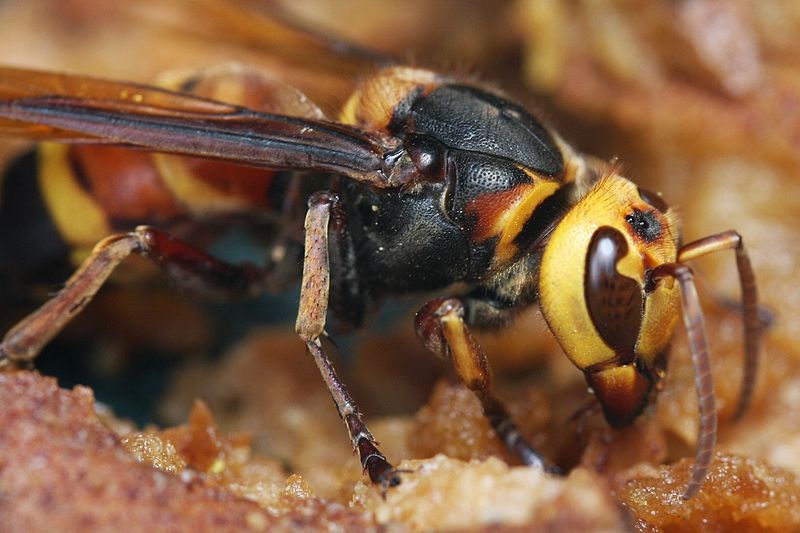Just on the heals if the COVID-19, as if the global pandemic wasn't causing enough panic already in the world today, a new species has emerged in America - specifically in the Washington state area. Washington State entomologist Chris Looney has stated they are most notorious for attacking honey bees.
The so called "murder hornet" is an Asian Giant Hornet, and has been on the radar of officials since late December when they were first discovered in Blaine, near the Canadian border.
“With queens that can grow to two inches long, Asian giant hornets can use mandibles shaped like spiked shark fins to wipe out a honeybee hive in a matter of hours, decapitating the bees and flying away with the thoraxes to feed their young,” The New York Times reported. “For larger targets, the hornet’s potent venom and stinger — long enough to puncture a beekeeping suit — make for an excruciating combination that victims have likened to hot metal driving into their skin.”
The giant hornets are originally from Asia, and scientists are scrambling to locate the destructive insects to exterminate them. If the hornets are not handled soon, and the hornets spread throughout the United States, they will become impossible to eradicate. They were said to have been first discovered in Blane, near the Canadian border.
“With queens that can grow to two inches long, Asian giant hornets can use mandibles shaped like spiked shark fins to wipe out a honeybee hive in a matter of hours, decapitating the bees and flying away with the thoraxes to feed their young,” The New York Times reported. “For larger targets, the hornet’s potent venom and stinger — long enough to puncture a beekeeping suit — make for an excruciating combination that victims have likened to hot metal driving into their skin.”
Dozens of people in China and Japan have fallen victim every year to the Asian Giant Hornets.
“Scientists have since embarked on a full-scale hunt for the hornets, worried that the invaders could decimate bee populations in the United States and establish such a deep presence that all hope for eradication could be lost,” The Times added. “Jun-ichi Takahashi, a researcher at Kyoto Sangyo University in Japan, said the species had earned the ‘murder hornet’ nickname there because its aggressive group attacks can expose victims to doses of toxic venom equivalent to that of a venomous snake; a series of stings can be fatal.”
The Times' reports At least two nests have already been discovered across the border in Canada, and the nests were not related, “meaning there had probably been at least two different introductions in the region.”
As you can probably guess, the sting is said to be by far more potent, and more painful than the venom from a regular honey bee.
“The giant hornets are attracted to human sweat, alcohol and sweet flavors and smells,” CNN reported. “They are especially sensitive to when animals or people run.”
At this time, no one is certain how the Asian Giant Hornet arrived here from Asia, although its speculated they were deliberately brought here by someone because “in a lot of Asian countries, these big meaty wasps are food, and so it’s entirely possible that somebody brought these to try and cultivate a food source in North America.”
Original article: dailywire












